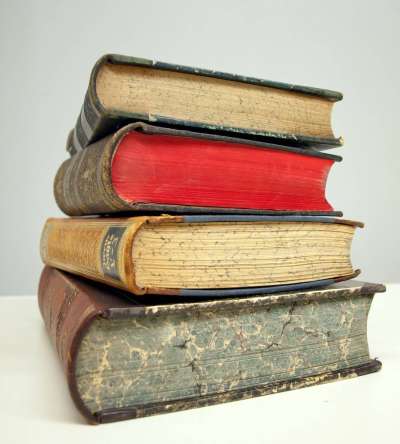The Language of One Day in the Life of Ivan Denisovich
A concern in the teaching of Ivan Denisovich is the occasional use of profanity in the novel. The appropriateness of this language relative to the harsh setting and political climate of the novel should be addressed during the introduction to the novel.
The vocabulary of Ivan Denisovich is relatively simple; however, Solzhenitsyn uses many Yiddish and Russian words that may be difficult for young readers. A research project involving Yiddish may be incorporated into the teaching of this novel. (An excellent sourcebook for such research is Jacques Rossi's The Gulag Handbook.) The following are examples of Yiddish and Russian words that may need explanation before students begin reading the novel.
valenki: Knee-length felt boots for winter wear.
kolkhoz: A collective farm of the former USSR.
gulag: Forced labor camp in the former USSR.
taiga: Swampy coniferous forest of Siberia beginning where the tundra ends.
zeks: Prisoners in the gulags.
kasha: A mush made from coarse cracked buckwheat, barley, millet, or wheat.
oprichniki: Member of an imperial Russian police force; Ivan the Terrible's palace guards.
kulak: Rich peasants who were considered oppressors by the communists and who were penalized with fines or the confiscation of their property.
Tartar: A native inhabitant of Tartary of Mongolic or Turkic origin; a person of irritable, violent, or intractable temper.
Theme
1. Resilience of the human spirit is perhaps the novel's most important theme. The following questions will help students explore this concept:
- What schools rules would you be willing to break to maintain the respect of your peers as well as your own self-respect?
- What unspoken or "unofficial" rules do you follow in order to maintain the respect of your peers as well as your own self-respect?
- What hardships have you overcome that threatened to rob you of your pride and self-confidence?
2. Another major theme is the trust between individuals and their leaders and peers, a relationship necessary for day-to-day living. To explore this theme, students might research group dynamics and then apply the information to their own group of friends, their families, their school hierarchy, etc.
3. Personal pride or dignity is a theme that might be explored by having students brainstorm their own definitions of this quality and then:
- describe people from their own lives who exemplify this quality.
- identify the characters from the novel who have the most pride or dignity.
- identify the characters from the novel who have the least pride or dignity.
4. Overcoming prejudices based on ethnic and cultural differences for the good of the group is another of the novel's themes. Students can research examples of events in which members of disparate groups put aside their differences for the greater good. (e.g. The Camp David Peace Accords between Israel and Egypt).
Students also may look for examples of instances in which disparate groups refused to put aside their differences for the common good (e.g., the ethnic strife in the former Soviet block). Why were they unable to overlook these differences even when this meant hardships for all sides?
5. The evil created by institutions permeates the novel's setting and affects every aspect of the characters' lives. Trace why each of the characters is sentenced to their term in the gulag.
Look at ways the system uses the work squads to control the prisoners through peer pressure. What moral compromises do prisoners have to make in order to survive?
Most societies see prisoner labor as more than simple punishment; as a reformative experience by which the transgressor "repays his debt to society" and learns how to be a productive member of the community. Explore the ironies and institutionalized conceptions of a gulag system existing in the "worker's paradise."
The Gulag System
Using the "Introduction" by Marvin L. Kalb in the Signet Classic edition of One Day in the Life of Ivan Denisovich as a beginning, have students research the life of Joseph Stalin, the gulag system under Stalin, the gulag system before and after Stalin, and the life of Alexancer Solzhenitsyn. (See the Bibliography at the end of this teaching guide for information.)













